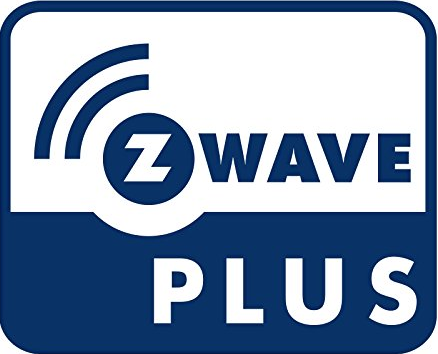
GE
In-Wall Touch Sensing Smart Dimmer
SKU: 14289/ZW3009

Quickstart
This is a
Adding your device to a Z-Wave network1. Follow the instructions for your Z-Wave certifiedcontroller to add a device to the Z-Wave network.2. Once the controller is ready to add your device, pressand release anywhere on the touch panel.
Important safety information
Please read this manual carefully. Failure to follow the recommendations in this manual may be dangerous or may violate the law. The manufacturer, importer, distributor and seller shall not be liable for any loss or damage resulting from failure to comply with the instructions in this manual or any other material. Use this equipment only for its intended purpose. Follow the disposal instructions. Do not dispose of electronic equipment or batteries in a fire or near open heat sources.What is Z-Wave?
Z-Wave is the international wireless protocol for communication in the Smart Home. This device is suited for use in the region mentioned in the Quickstart section.
Z-Wave ensures a reliable communication by reconfirming every message (two-way communication) and every mains powered node can act as a repeater for other nodes (meshed network) in case the receiver is not in direct wireless range of the transmitter.
This device and every other certified Z-Wave device can be used together with any other certified Z-Wave device regardless of brand and origin as long as both are suited for the same frequency range.
If a device supports secure communication it will communicate with other devices secure as long as this device provides the same or a higher level of security. Otherwise it will automatically turn into a lower level of security to maintain backward compatibility.
For more information about Z-Wave technology, devices, white papers etc. please refer to www.z-wave.info.
Product Description
The GE Touch Sensing Dimmer is the industrys first Z-Wave Plus Smart Dimmer with fully integrated capacitive touch technology. The effortless and intuitive touch operation of GE Z-Wave Touch Dimmer reinvents the way consumers interact with lighting controls. The new Touch Dimmer offers an extremely smooth dimming performance with a simple intuitive designsimple tap on, tap off, or convenient zero to 100 percent dimming by simply gliding your finger up and down touch sensing surface. The GE Touch Sensing Dimmer is our most elegant in-wall lighting control that embeds Z-Wave Plus smart home technology to be controlled at the wall, by a mobile device, or by voice with Amazon Echo or Google Home.The GE Z-Wave Touch Sensing Dimmer brings together advanced touch sensing technology with an intuitive, minimalist design that sets a new standard for in-wall smart lighting controls. The sleek GE Z-Wave Touch Dimmer is poised to meet every interior design requirement with interchangeable paddle optionsavailable. Regardless of the home dcor, users can complement any design aesthetics with paddle colors available in light almond, black, white, brown, and ivory.The GE Z-Wave Touch Dimmer also features advanced settings to remember the most recent light levels. For example, the dimmer automatically remembers the last used settings and smoothly returns to the same light level when it is turned back on. This simple one-touch feature allows users to setthe perfect lighting level every time.
Prepare for Installation / Reset
Please read the user manual before installing the product.
In order to include (add) a Z-Wave device to a network it must be in factory default state. Please make sure to reset the device into factory default. You can do this by performing an Exclusion operation as described below in the manual. Every Z-Wave controller is able to perform this operation however it is recommended to use the primary controller of the previous network to make sure the very device is excluded properly from this network.
Reset to factory default
This device also allows to be reset without any involvement of a Z-Wave controller. This procedure should only be used when the primary controller is inoperable.
To return your switch to factory defaults1. Press and release side program button (G) three times quickly. TheLED will flash ON/OFF five (5) times when completed successfully.All button presses must be completed within five (5) seconds.Note: This should only be used in the event your networksprimary controller is missing or otherwise inoperable.
Safety Warning for Mains Powered Devices
ATTENTION: only authorized technicians under consideration of the country-specific installation guidelines/norms may do works with mains power. Prior to the assembly of the product, the voltage network has to be switched off and ensured against re-switching.
Inclusion/Exclusion
On factory default the device does not belong to any Z-Wave network. The device needs to be added to an existing wireless network to communicate with the devices of this network. This process is called Inclusion.
Devices can also be removed from a network. This process is called Exclusion. Both processes are initiated by the primary controller of the Z-Wave network. This controller is turned into exclusion respective inclusion mode. Inclusion and Exclusion is then performed doing a special manual action right on the device.
Inclusion
Adding your device to a Z-Wave network1. Follow the instructions for your Z-Wave certifiedcontroller to add a device to the Z-Wave network.2. Once the controller is ready to add your device, pressand release anywhere on the touch panel.Exclusion
To remove and reset the device1. Follow the instructions for your Z-Wave certified controllerto remove a device from the Z-Wave network.2. Once the controller is ready to remove your device, pressand hold the side button (G) of the smart dimmer. Whileholding, press and release anywhere on the touch panel,then release the side button to remove it from the network.Quick trouble shooting
Here are a few hints for network installation if things dont work as expected.
- Make sure a device is in factory reset state before including. In doubt exclude before include.
- If inclusion still fails, check if both devices use the same frequency.
- Remove all dead devices from associations. Otherwise you will see severe delays.
- Never use sleeping battery devices without a central controller.
- Dont poll FLIRS devices.
- Make sure to have enough mains powered device to benefit from the meshing
Association - one device controls an other device
Z-Wave devices control other Z-Wave devices. The relationship between one device controlling another device is called association. In order to control a different device, the controlling device needs to maintain a list of devices that will receive controlling commands. These lists are called association groups and they are always related to certain events (e.g. button pressed, sensor triggers, ...). In case the event happens all devices stored in the respective association group will receive the same wireless command wireless command, typically a 'Basic Set' Command.
Association Groups:
| Group Number | Maximum Nodes | Description |
|---|---|---|
| 1 | 5 | Z-Wave Plus Lifeline, Multi-level Switch Report, Device Reset Locally Notification. |
| 2 | 5 | Basic Set and is controlled with the local load. |
Configuration Parameters
Z-Wave products are supposed to work out of the box after inclusion, however certain configuration can adapt the function better to user needs or unlock further enhanced features.
IMPORTANT: Controllers may only allow configuring signed values. In order to set values in the range 128 ... 255 the value sent in the application shall be the desired value minus 256. For example: To set a parameter to 200 it may be needed to set a value of 200 minus 256 = minus 56. In case of a two byte value the same logic applies: Values greater than 32768 may needed to be given as negative values too.
Parameter 11: Dim Rate Adjustment (ON/OFF)
Adjusts the total amount of steps Size: 1 Byte, Default Value: 1
| Setting | Description |
|---|---|
| 1 - 99 | Number of steps or levels |
Parameter 12: Dim Rate Adjustment (ON/OFF)(Parameter 11 must be default)
Adjusts the time between steps Size: 2 Byte, Default Value: 3
| Setting | Description |
|---|---|
| 1 - 255 | Time between steps |
Parameter 3: LED Light
Used to either invert or disable the LED indicator. Size: 1 Byte, Default Value: 0
| Setting | Description |
|---|---|
| 0 | Default - LED OFF when load is ON |
| 1 | LED ON when load is ON |
| 2 | LED always OFF |
Parameter 4: Invert Switch
Changes the switch from u0022ON at top, OFF on the bottomu0022 to u0022OFF at the top, ON on the bottomu0022. Size: 1 Byte, Default Value: 0
| Setting | Description |
|---|---|
| 0 | Default |
| 1 | Invert Switch |
Parameter 6: Dim up/Dim down rate
Changes speed light dims when manually operated Size: 1 Byte, Default Value: 0
| Setting | Description |
|---|---|
| 0 | Dim up/down the light to the specified level quickly |
| 1 | Dim up/down the light to the specified level slowly |
Parameter 7: Dim Rate Adjustment (Between levels)
Adjusts the total amount of steps Size: 1 Byte, Default Value: 1
| Setting | Description |
|---|---|
| 1 - 99 | Number of steps or levels |
Parameter 8: Dim Rate Adjustment (Between levels)(Parameter 7 must be default)
Adjusts the time between steps Size: 2 Byte, Default Value: 3
| Setting | Description |
|---|---|
| 1 - 255 | Time between steps |
Technical Data
| Hardware Platform | ZM5101 |
| Device Type | Light Dimmer Switch |
| Network Operation | Always On Slave |
| Firmware Version | HW: 255 FW: 5.11 |
| Z-Wave Version | 6.51.10 |
| Certification ID | ZC10-17105823 |
| Z-Wave Product Id | 0x0063.0x4944.0x3233 |
| Color | White |
| Firmware Updatable | Updatable by Manufacturer |
| Electric Load Type | Dimmable FluorescentDimmable LED |
| Neutral Wire Required | ok |
| Frequency | XXfrequency |
| Maximum transmission power | XXantenna |
Supported Command Classes
- Association Grp Info
- Association V2
- Basic
- Configuration
- Crc 16 Encap
- Device Reset Locally
- Firmware Update Md V2
- Manufacturer Specific V2
- Powerlevel
- Scene Activation
- Scene Actuator Conf
- Switch All
- Switch Multilevel V2
- Version V2
- Zwaveplus Info V2
Controlled Command Classes
- Basic
Explanation of Z-Wave specific terms
- Controller — is a Z-Wave device with capabilities to manage the network. Controllers are typically Gateways,Remote Controls or battery operated wall controllers.
- Slave — is a Z-Wave device without capabilities to manage the network. Slaves can be sensors, actuators and even remote controls.
- Primary Controller — is the central organizer of the network. It must be a controller. There can be only one primary controller in a Z-Wave network.
- Inclusion — is the process of adding new Z-Wave devices into a network.
- Exclusion — is the process of removing Z-Wave devices from the network.
- Association — is a control relationship between a controlling device and a controlled device.
- Wakeup Notification — is a special wireless message issued by a Z-Wave device to announces that is able to communicate.
- Node Information Frame — is a special wireless message issued by a Z-Wave device to announce its capabilities and functions.